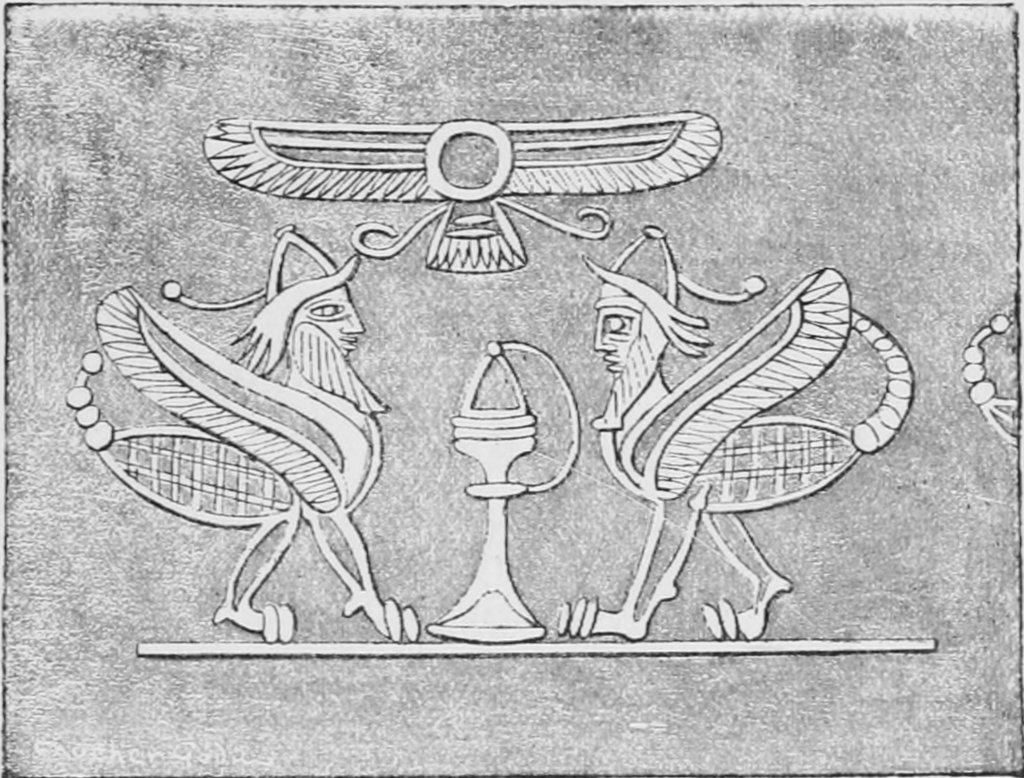Aqrabuamelu – Mysterious Scorpion Men In Babylonian Mythology
Ellen Lloyd - AncientPages.com - The Aqrabuamelu are mysterious scorpion men mentioned in many Babylonian myths. They were said to be guardians of Shamash, the god of Sun truth, justice, and healing.
A History of Babylon, From the Foundation of the Monarchy to the Persian Conquest History of Babylonia - Leonard William King (1915) - Public Domain
The scorpion men are described to have the head, torso, and arms of a man and the body of a scorpion. They were sometimes also referred to as girtablilu.
The existence of these fascinating beings dates back to the beginning of time. Myths and legends tell that the Tiamat first created the Aqrabuamelu to wage war against the younger gods for the betrayal of her mate, Apsu.
Apsuwas is the primeval sea below the void space of the underworld (Kur) and the earth (Ma) above.
The Scorpion Men guarded the entrance to Kurnugi
We also come across the scorpion men in the Epic of Gilgamesh. Their duty was to guard outside the gates of the Sun god Shamash at the mountains of Mashu.
The gates were the entrance to Kurnugi, the land of darkness. The scorpion men opened the doors for Shamash as he traveled out each day and closed the doors after him when he returned to the underworld at night.
The scorpion men must have been able to see beyond the horizon as they could also warn travelers of coming dangers. According to myths written in the Akkadian language, the Aqrabuamelu had heads that could touch the sky. They could terrorize people, and their glance resulted in death.
Drawing of an Assyrian intaglio depicting scorpion men. Image credit: Wikipedia -Public Domain
Artifacts discovered in the Jiroft and Kahnuj districts of Kerman Province, Iran, reveal the scorpion men also played an essential part in Jiroft's mythology.
The Scorpion Men In Aztecs' Myths Were Called The Tzitzimime
Similar scorpion men are also mentioned in the legends of the Aztecs. They were called Tzitzimime and considered to be spirits of defeated gods cast out of the sky after they destroyed the sacred grove of fruit trees.
A pair of blue anthropomorphic creatures, one with arms and tail of a scorpion decorate the pillars in the "Star-Chamber" at the Cacaxtla archeological site southeast of Mexico City. A reproduction of the murals can be seen at the National Museum of Anthropology. Image credit: Wikipedia
The Tzitzimime were deities associated with stars, especially those seen around the Sun during a solar eclipse. Their depictions show skeletal female figures wearing skirts, often with skull and crossbones designs. In Postconquest descriptions, they are often described as "demons" or "devils."
The Tzitzimimeh had a double role in the Aztec religion. They protected humanity but could also be dangerous.
Updated on March 23, 2024
Written by Ellen Lloyd – AncientPages.com
Copyright © AncientPages.com All rights reserved. This material may not be published, broadcast, rewritten or redistributed in whole or part without the express written permission of AncientPages.com
Expand for referencesMore From Ancient Pages
-
 Unusual Archaeological Object Reveals Traces Of Prehistoric Settlements Mikołajki
Archaeology | Jun 19, 2023
Unusual Archaeological Object Reveals Traces Of Prehistoric Settlements Mikołajki
Archaeology | Jun 19, 2023 -
 2,000-Years-Old Warrior Graves With Iron Swords, Mysterious Square Structures, Unearthed In Bejsce, Poland
Archaeology | Nov 21, 2019
2,000-Years-Old Warrior Graves With Iron Swords, Mysterious Square Structures, Unearthed In Bejsce, Poland
Archaeology | Nov 21, 2019 -
 Rare 500-Year-Old Wreck From Missing Ship Samson Discovered In Central Stockholm, Sweden
Archaeology | Dec 20, 2019
Rare 500-Year-Old Wreck From Missing Ship Samson Discovered In Central Stockholm, Sweden
Archaeology | Dec 20, 2019 -
 Maya Site With At Least 300 Buildings Some Of Which Are Over 8 Meters High – Discovered
Archaeology | Sep 16, 2022
Maya Site With At Least 300 Buildings Some Of Which Are Over 8 Meters High – Discovered
Archaeology | Sep 16, 2022 -
 Katanga Cross: Symbol Of Secrets, Power And Valuable Currency Of The Congolese People
Ancient Symbols | Sep 10, 2018
Katanga Cross: Symbol Of Secrets, Power And Valuable Currency Of The Congolese People
Ancient Symbols | Sep 10, 2018 -
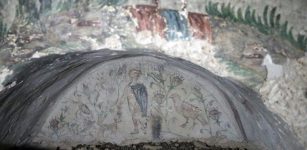 Magnificent 1,800-Year-Old Rock Tombs Beautifully Decorated Discovered In The Ancient City Of Blaundus
Archaeology | Oct 5, 2021
Magnificent 1,800-Year-Old Rock Tombs Beautifully Decorated Discovered In The Ancient City Of Blaundus
Archaeology | Oct 5, 2021 -
 Native American Sun Dance: Important Ceremony Of The Plains Indians Of North America
Ancient History Facts | May 20, 2016
Native American Sun Dance: Important Ceremony Of The Plains Indians Of North America
Ancient History Facts | May 20, 2016 -
 Huge Ancient Roman Kovachevsko Kale Fortress And Discovery Of A Horreum In Bulgaria
Civilizations | Dec 15, 2015
Huge Ancient Roman Kovachevsko Kale Fortress And Discovery Of A Horreum In Bulgaria
Civilizations | Dec 15, 2015 -
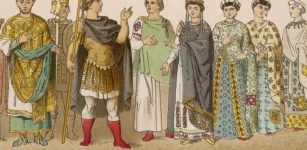 Justinianic Plague: Modeling Study Challenges Death Rate And Severity Of Infectious Disease
Archaeology | May 4, 2020
Justinianic Plague: Modeling Study Challenges Death Rate And Severity Of Infectious Disease
Archaeology | May 4, 2020 -
 What Was Humor Like In The 13th Century?
Featured Stories | Jun 22, 2018
What Was Humor Like In The 13th Century?
Featured Stories | Jun 22, 2018 -
 Discovered – Large Mysterious Structure Hidden Under The Sand In The Sahara Desert – A New Pyramid Or Something Else?
Archaeology | Nov 13, 2019
Discovered – Large Mysterious Structure Hidden Under The Sand In The Sahara Desert – A New Pyramid Or Something Else?
Archaeology | Nov 13, 2019 -
 Skull Of Mysterious, Extinct Cousin Of Neanderthals Recreated From A Fossilized Finger
Archaeology | Sep 19, 2019
Skull Of Mysterious, Extinct Cousin Of Neanderthals Recreated From A Fossilized Finger
Archaeology | Sep 19, 2019 -
 Ancient Seal Offers First Biblical Evidence Of The Prophet Isaiah?
Archaeology | Feb 27, 2018
Ancient Seal Offers First Biblical Evidence Of The Prophet Isaiah?
Archaeology | Feb 27, 2018 -
 Disbelief In Human Evolution Is Linked To Prejudice And Racism – Scientists Say
Human Beginnings | Apr 5, 2022
Disbelief In Human Evolution Is Linked To Prejudice And Racism – Scientists Say
Human Beginnings | Apr 5, 2022 -
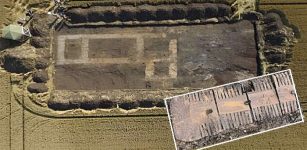 Lincolnshire’s Prehistoric Henge And A Sacred Site Dating Back Hundreds Of Years
Archaeology | Apr 6, 2024
Lincolnshire’s Prehistoric Henge And A Sacred Site Dating Back Hundreds Of Years
Archaeology | Apr 6, 2024 -
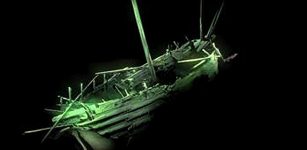 Still Intact Renaissance Shipwreck Discovered On The Baltic Seabed
Archaeology | Jul 24, 2019
Still Intact Renaissance Shipwreck Discovered On The Baltic Seabed
Archaeology | Jul 24, 2019 -
 Historic Shipwreck Mentor Reveals Its Underwater Secrets
Archaeology | May 14, 2022
Historic Shipwreck Mentor Reveals Its Underwater Secrets
Archaeology | May 14, 2022 -
 Mystery Of The Horrible ‘Thing’ Found In A Dominican Monastery
Featured Stories | Sep 4, 2023
Mystery Of The Horrible ‘Thing’ Found In A Dominican Monastery
Featured Stories | Sep 4, 2023 -
 Oxford University Is Older Than The Aztec Empire – Historical Records Say
Ancient History Facts | Dec 5, 2017
Oxford University Is Older Than The Aztec Empire – Historical Records Say
Ancient History Facts | Dec 5, 2017 -
 Archaeology Illuminates Chinese Businesses In Eugene
Archaeology | May 23, 2022
Archaeology Illuminates Chinese Businesses In Eugene
Archaeology | May 23, 2022



